Are you new to the world of technical SEO? Not sure where to start when it comes to auditing your website for technical SEO issues? This technical SEO audit checklist for beginners is for you. In this article, you will learn how to do a basic technical SEO audit for your website. It is recommended that you read this article till the end before you begin with the technical SEO audit. This will help you to understand what to look for and what to do.
What is a technical SEO audit?
A technical SEO audit is a comprehensive analysis of a website’s technical aspects that can impact its visibility in search engines. It can identify and diagnose problems that could be holding back a website from achieving its potential organic traffic.
This technical SEO audit checklist covers the following elements to check when auditing your website:
- Setup Google search console and Google analytics
- Make sure your content is visible
- Check for Coverage/Indexing Issues
- Test site speed and performance
- Crawl your site and look for any crawl errors
- Fix Core Web Vital Errors
- Evaluate your website’s mobile friendliness
- Evaluate your website’s XML sitemap
- Check your website’s robots.txt file
- Check for Security issues
- Analyze your website’s URL Structure
- Evaluate your website’s internal linking
- Review your website’s title tags and meta descriptions
- Analyze your website’s content
- Check for broken links
- Check for canonical errors
- Review your website’s redirects
- Scanning your Site for 404s
- Analyze your website’s breadcrumbs
- Check your website’s structured data
- Check for duplicate or thin content
- Analyse spammy Backlinks
- Check if your website is using an SSL certificate
As you can see, there are many factors to consider when conducting a technical SEO audit. This technical SEO audit checklist is a great starting point for beginners, but keep in mind that every website is different and you may need to adjust your audit accordingly. Be sure to take your time and thoroughly check each item on the list to ensure your website is optimized for search engines.
Why do webmasters need to perform Technical SEO Audits?
As a webmaster, you are responsible for the health and well-being of your website. Part of that responsibility is ensuring that your website is optimized for search engines. Technical SEO audits can uncover a variety of issues that may be preventing your website from achieving its full potential in the search results. So, by addressing technical issues, you can improve your website’s visibility and organic traffic.
Below are some of the major benefits that webmasters can gain from doing a proper technical SEO audit of their websites or blogs.
- Technical SEO audit improves your website’s functionality and overall performance.
- It can identify issues that are preventing your website from ranking highly in search engine results pages (SERPs).
- It can help you to troubleshoot website problems so that you can fix them and improve your website’s performance.
- It can also help you to improve your website’s code, structure, and content so that it is more search engine friendly.
- Technical SEO audits can ultimately help you to increase your website’s traffic and achieve better search engine visibility.
How To Perform a Technical SEO Audit?
Now let’s begin the technical SEO audit! Please make sure to follow everything mentioned in this technical SEO audit checklist and take notes of what you performed, and keep it safe for future reference.
#1. Get access to Google Analytics and Search Console
The first and foremost step to performing a technical SEO audit is getting access to Google Analytics and Search Console. These two tools will provide you with a wealth of data that you can use to identify any technical issues that may be holding your site back. Once you have access to these tools, you can start by looking at your website’s overall health and prepare for the next step.
#2. Make sure your site is visible in Search Engines
Make sure that the pages of your site are properly displayed on the search engine result page. If you search Site:Yourdomain.com on Google, you can see whether the pages of your site are properly displayed on the Google search result page. If all of your pages are visible, then it is fine, otherwise, it may be due to some technical issues, which we will discuss in the next steps.

#3. Check and Fix The Coverage/Indexing Issues
Next, check for coverage or indexing issues that are preventing your site from being indexed. There can be many reasons which can lead to indexing issues, some of them are:
- Excluded by Robots.txt file
- Low-quality content
- Error on Sitemap
- Poor Interlinking structure
- Duplicate content issue
- An issue with your server
- Unsupported content types
You can check this in the index section of your Google search console dashboard. Open Google search console > Click on Pages and check the reasons why your pages aren’t indexed on Google. Now you have to identify and fix every issue accordingly.

The most common errors every webmaster gets in this section are Discovered – Currently Not Indexed issue and Crawled – Currently Not Indexed issue. To solve these issues, you may use the following guides:
#4. Test and Improve Site Speed and Performance
One of the most important aspects of technical SEO is site speed and performance. A slow site will not only frustrate users but will also hurt your search engine rankings.
There are a number of ways to test your site speed, including Google’s PageSpeed Insights tool and Gtmetrix. Both of these tools will give you a good idea of where your site needs improvement.
Open Google PageSpeed Insight Tool in your web browser > Paste your URL > Run the audit and get to know the area that needs to be improved.

Once you have a list of areas that need improvement, you can start making changes to your site as per the recommendation. Some common speed and performance optimization techniques include minifying CSS and JavaScript files, compressing images, and using a content delivery network (CDN).
#5. Crawl your site and look for any crawl errors
Make sure that your site can be crawled by search engines and that there are no errors that could prevent them from doing so. This can be done by using a tool like Screaming Frog to crawl your site and identify any errors that may be present.
Once you have identified any errors, be sure to fix them as soon as possible as they could be preventing your site from being properly indexed by search engines.
#6. Check and Improve Core Web Vitals
The Google search algorithm is constantly evolving to better meet the needs of users. In May 2021, Google announced a new set of ranking factors called “Core Web Vitals” These factors are based on user experience data and measure things like page loading time (LCP), interactivity (FID), and visual stability (CLS).
Google has announced that it will use the core web vitals as a ranking factor in its search algorithm. This means that websites that have good scores for the core web vitals will rank higher in Google search results.
To identify if your site has Core Web Vitals issues, you need to Go to Search console > and click on the Core Web Vitals under the Experience section.
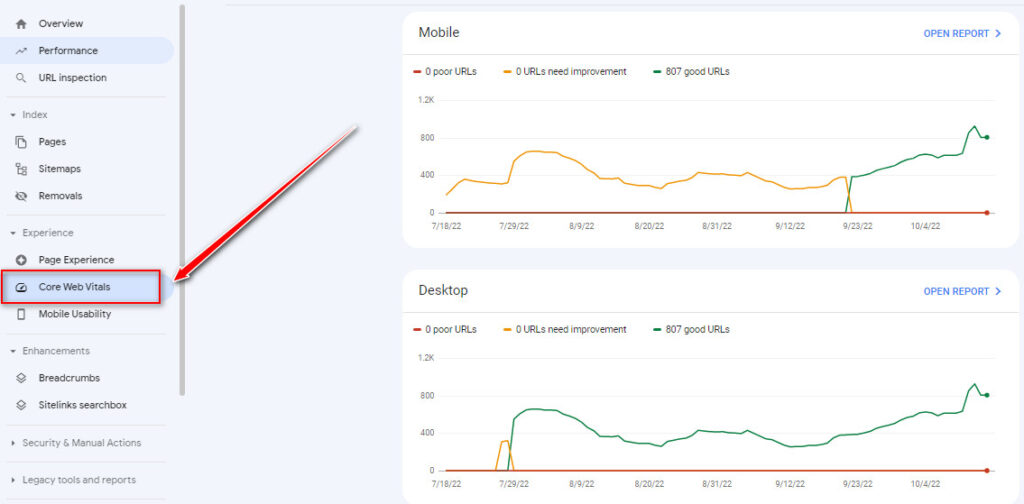
Since these metrics are different for mobile and desktop, you need to check both reports and fix the errors.
When you click on Open Report, you will see your pages are categorized into 3 sections: “Poor”, “Need improvement” and “Good URLs.” These are determined by the following threshold:
| Metrics | Poor | Need Improvement | Good |
| LCP | >4s | <=4s | <=2.5s |
| CLS | >0.25 | <=0.25 | <=0.1 |
| FID | >300ms | <=300ms | <=100ms |
Now, after you have recognized the Core web vitals issues, you need to fix them one by one.
Related: How To Fix LCP Issue: Longer Than 4s (Desktop) and (Mobile)
#7. Evaluate your website’s mobile friendliness
Since the majority of people access Google search with mobile devices, Google has started mobile-first indexing practices. This means that Google will now use the mobile version of your website as their primary search engine index. That’s why you must take care of your site’s Mobile usability and keep up improving it.
You can find mobile-friendliness issues in the Mobile Usability tab under the Experience section of your Search console dashboard.

Some best practices to improve mobile usability include:
- Configure Viewport Meta Tag
- Set up Max-Width Attribute To Every Image
- Optimize The Font Size
- Set The Touch Target Size
- Size images width
- Use Flexbox CSS Layout
- Set Media Query Breakpoints
The following articles have covered all of the major Mobile usability issues and ways to fix them.
How To Fix Clickable Elements Too Close Together Error?
How to Fix Content Wider Than Screen Error – Mobile Usability Issue
How to Fix ‘Text Too Small to Read’ Error- Mobile Usability Issue
#8. Optimize your website’s XML sitemap
An XML sitemap is a file that contains a list of all the pages on a website. It is used to tell search engines about the structure of a website and how to find all the pages on it.
You need to make sure that your site has an error-free XML sitemap which should include all the pages of your site that you want to be indexed in search engines.
Also, you should exclude the following from your XML sitemap:
- Duplicate content
- URLs with 4xx or 5xx status codes
- URLs with no-index tags
- URLs that are 301 redirecting
- URLs with parameters
Doing so will optimize the crawl budget of your site and search engine crawlers will get the opportunity to crawl your other important pages.
#9. Check your website’s robots.txt file
Your website’s robots.txt file is a key part of your technical SEO audit. This file tells search engine bots which pages on your site they are allowed to crawl. If your robots.txt file is missing or incorrect, it can prevent your pages from being indexed, which will cause you a huge loss.
Simply open robots.txt Tester, and check if your robots.txt file is configured correctly. There should not be any Errors and Warnings as in the picture below:
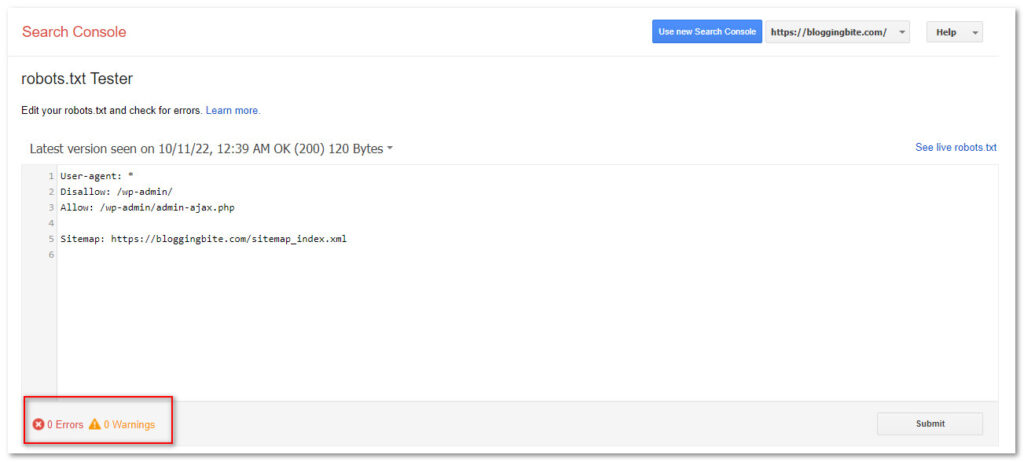
#10. Check for Security issues
This is another important part of this technical SEO audit checklist. If google finds any security issues with your sites that could potentially harm a visitor or their computer, It will notify you through the Google webmaster’s Security Issues section.

List of security issues you may find under the Security issues report are:
- Hacked: Malware
- Hacked: Code injection
- Hacked: Content injection
- Hacked: URL injection
- Deceptive pages
- Deceptive embedded resources
- Harmful downloads
- Links to harmful downloads
- Unclear mobile billing
- Possible phishing detected on user login
- Uncommon downloads
You can easily tackle these issues just by expanding the issue description on the Security Issues report and following the instruction properly.
#11. Analyze your website’s URL Structure
Your website’s URL structure is important for two main reasons: first, it can help search engines understand your site’s hierarchy and second, it can create a better user experience.
A well-organized website will have a URL structure that is easy to follow and makes sense to both users and search engines.
You can follow the following best practices to make your URL SEO-friendly and audience-friendly:
- Make your URL clean and keyword optimized
- Keep it short and sweet so that people can memorize it
- Use static URLs instead of dynamic URLs.
The optimized URL structure looks like:
- Bloggingbite.com/Top-Paying-Adsense-Niches/
- Bloggingbite.com/SEO/
Note: If your website is old and already has a lot of content, then please consult with an SEO expert or your developer team before playing with the URL structure. It is very sensitive and you tend to lose everything even with a minor mistake.
#12. Evaluate your website’s internal linking
An internal link is a hyperlink that points to another page on the same website. Internal linking is an important part of SEO because it helps search engines understand the structure of your website.
On the step of this Technical SEO Audit Checklist, you will need to perform the following tasks:
- Make sure your website’s navigation is easy to follow and links to all the important pages on your site.
- Check that all your internal links are using the correct anchor text and are not broken.
- Use a tool like Screaming Frog to crawl your website and check for any broken links.
- Ensure that the internal links are providing value to users.
Internal linking best practices
- Use keyword-rich anchor text
- Relevancy and context
- Strategic use of do-follow and no-follow tags
- Interlink from an Old post to a New post
- Interlink from a New post to an Old post
- Open on the same page
- Don’t overoptimize.
#13. Review your website’s title tags and meta descriptions
Title tags and meta descriptions are two of the most important on-page SEO elements. They help search engines understand what your page is about and decide whether to show it in the search results. In this section of the technical SEO audit checklist, you need to examine the following points:
- Are your title tags and meta descriptions unique?
- Do your title tags and meta descriptions accurately reflect the content on your website?
- Are your title tags and meta descriptions the right length?
- Are your title tags and meta descriptions keyword-rich?
If you answered “No” to any of the above questions, then you need to work on your website’s title tags and meta descriptions.
#14. Analyze your website’s content
Make sure that all of your website’s content is high-quality and relevant to your audience. Conduct a content audit to identify any areas that need improvement. The following points may help in analyzing the content and ensuring that your site has good pieces:
- Is your content keyword-rich and informative?
- Is your content well-written and free of grammar errors?
- Is your content updated regularly?
- Does your content fulfil the search intent?
- Does your content have enough media, headings, subheadings and bullet points?
- Does your content provide value to the audience?
If you answered “No” to any of the above questions, then you need to work on improving your website’s content.
#15. Check and Fix The Broken Llinks
A broken link is a link that is no longer working. This can be due to the page it is linking to no longer existing, or the link has been moved. Either way, broken links can negatively impact your website’s SEO.
To find and fix broken links, you can use a tool like Screaming Frog or Ahrefs Webmaster Tools.
After finding the broken links in your website, you will need to fix them by following the ways below:
- Redirect the broken link to a new, working page.
- Update the broken link to point to a new, working page.
- Remove the broken link from the page entirely.
#14. Check for canonical errors:
A canonical error is when a page has more than one URL. This can happen when a website has both www and non-www versions, or when there are differences in how the URL is accessed with or without the www. This can cause problems with search engines because they can’t determine which URL is the correct one to index.
To check for canonical errors, you can use a tool like Screaming Frog. This will crawl your website and identify any pages with more than one URL. You can then redirect the non-canonical URLs to the canonical URL, using a 301 redirect.
#15. Review your website’s redirects
Redirect is a way to send both users and search engines to a different URL from the one they originally requested. Redirects are useful in a number of situations, such as when you change the URL of a page on your site, or when you want to redirect users from an old URL to a new one.
In this section of your technical SEO audit checklist, you need to ensure that your website’s redirects are set up correctly to avoid any 404 errors.
You can use any of your favourite SEO tools for this purpose. If you own a small blog or website, I always recommend to to use Ahrefs Webmaster Tools. It’s completely free!
#16. Scanning and Fixing your Site for 404s
A technical SEO audit checklist is not complete without a scan for 404s. 404s are pages that are not found on your site. This can happen for a number of reasons, but most often it is because the page has been moved or deleted.
A 404 can hurt your SEO in two ways. First, it can cause your site to lose traffic if a user clicks on a link to a page that does not exist.
Second, it can cause search engines to believe that your site is not as comprehensive as it should be, which can hurt your ranking.
Therefore, It’s a must-do thing during your technical SEO audit.
There are a few practices to repair 404 errors on your website.
- The first is to delete the link pointing to the page.
- The second is to create new content in the URL that is missing.
- The third is to redirect the old URL to a new URL.
Choose any of these methods as per your needs.
#17. Analyze your website’s breadcrumbs
Breadcrumbs are a type of navigation that shows the path of the current page. For example, if you are on a page about SEO, the breadcrumb navigation would look something like this: Home > SEO.
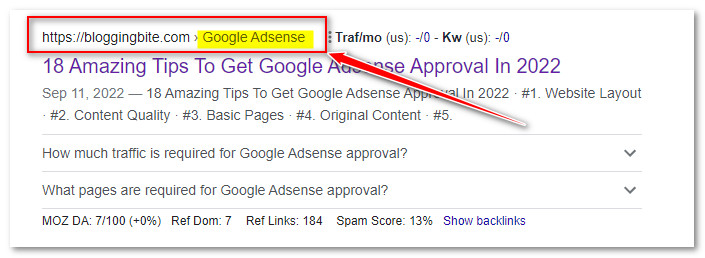
Breadcrumbs are an important part of a technical SEO audit checklist, as they help search engines understand the structure of your website and provide a way for users to navigate your site.
To perform a breadcrumb analysis, simply look at your website’s breadcrumb trail and see if it makes sense. Is it easy to follow? Are the breadcrumbs accurate?
If you notice any problems with your website’s breadcrumbs, make the necessary changes to improve the trail.
#18. Check your website’s structured data
One important thing to check for during a technical SEO audit is schema markup. This is code that helps search engines understand the content on your website and can result in better search engine rankings and rich snippets in the search results.
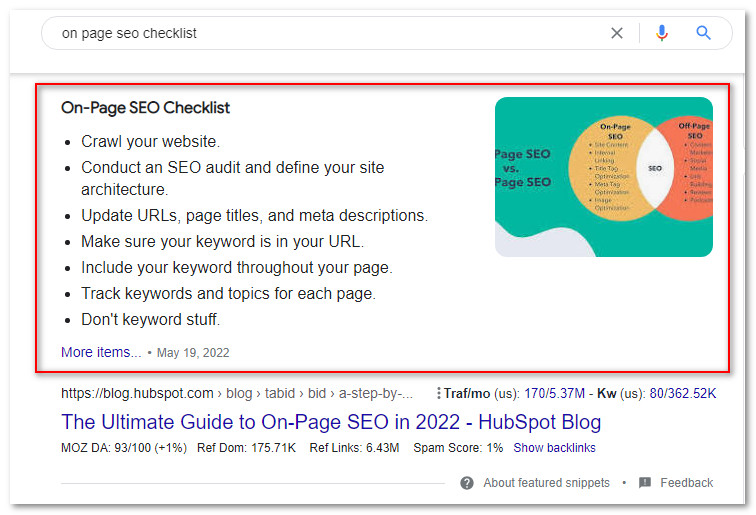
The good news is that you don’t need to write code and have much technical knowledge to configure your website’s structured data. SEO plugins like Rank math or Yoast have the necessary options to do so.
You can use the Google Structured Data Testing Tool to check if your website has valid schema markup and to find any errors.
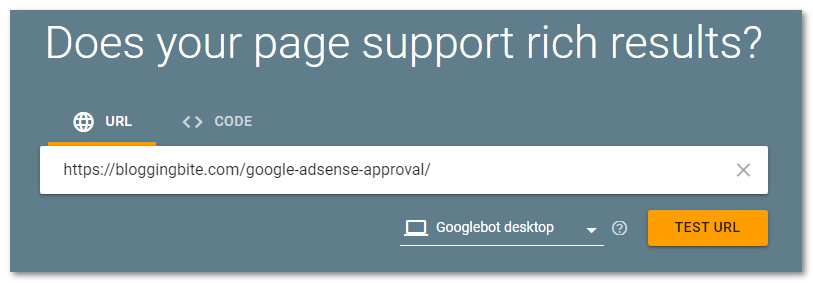
#19. Check for duplicate or thin content
If you find that you have duplicate or thin content on your website, it’s important to take steps to fix it immediately. You can’t expect to rank on search engines if your content doesn’t provide value to users.
So, what should you do first?
The first step is to identify which pages are thin or duplicates. You can go with a manual audit or take the help of SEO tools to identify the thin and duplicate pages on your site.
And after you have the list of thin and duplicate pages, you can try adding more unique content to those pages or consolidate similar pages into one.
#20. Analyse spammy Backlinks
Backlinks are key to ranking in search engines but….
Spammy backlinks always hurt your website’s SEO.
To analyse spammy backlinks, you can use a variety of tools including Semrush, ahrefs, and Majestic. These tools will help you to identify which backlinks are spammy and which ones are of high quality. Once you have identified the spammy backlinks, you can either disavow them or contact the website owner to have them removed.
#21. Check if your website is using an SSL certificate
SSL certificates help to ensure that your website is secure and that your visitors’ information is protected. It’s a must for any website to be accessible on web browsers as well as to have a chance to rank high in search engine results.
Websites that use SSL certificates can be identified by the HTTPS:// in the URL, and a padlock icon in the browser.

If your site is not using an SSL certificate, you may ask your hosting providers to install an SSL certificate on your site. And the good news is, almost every hosting providers offer an SSL certificate for free.
Complete Technical Audit Checklist For Beginners
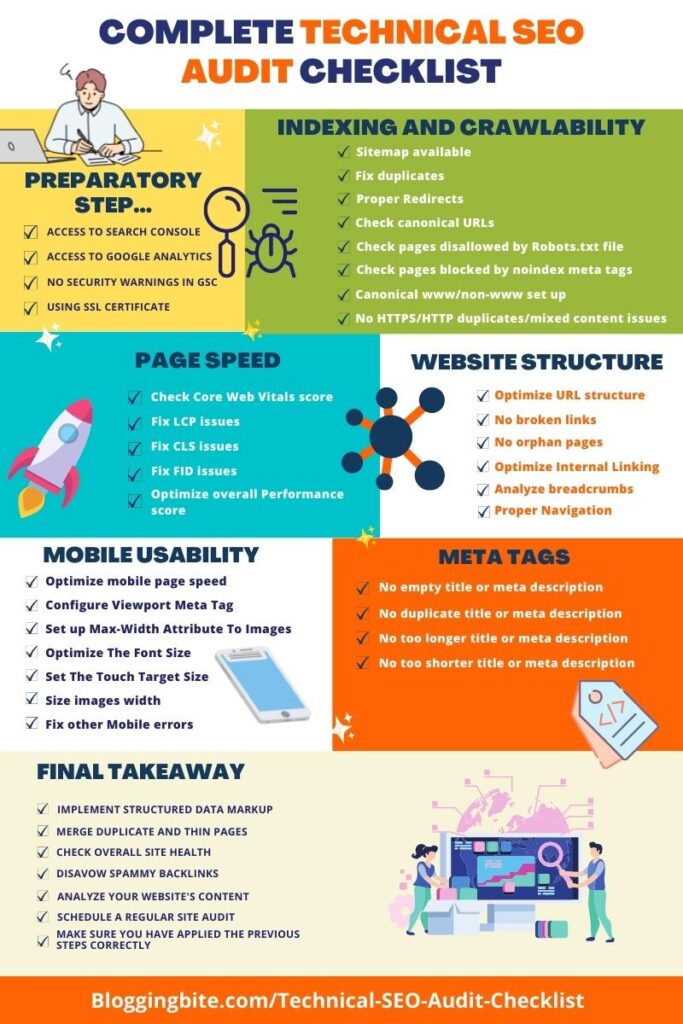
Technical Audit Checklist | FAQs
When Should I Perform a Technical SEO Audit?
The answer to this question depends on the current state of your website and how well it is performing in search. If you are seeing a decline in traffic or rankings, then it may be time to perform a technical SEO audit. Even if your website is performing well, it’s a good idea to perform regular audits to ensure that everything is up to par and to identify any potential areas for improvement.
What is included in technical SEO?
A technical SEO audit includes an assessment of your website’s architecture, code, and on-page elements. It also looks at your site’s off-page SEO, such as your link profile and social media signals. A technical SEO audit can help you identify and fix any technical issues that may be holding your site back from ranking higher in search engine results pages (SERPs).
What tools do you use for technical SEO audits?
There are a variety of tools that can be used for technical SEO audits. Some common tools include Google Analytics, Google Search Console, Google page speed insight, Ahrefs webmasters tool, Screaming frog etc. The tools you require for a technical SEO audit depend upon many factors such as the size of your site, the platform you used to build your site, the current state of your site, the Complexity of the website etc.
How long does a technical SEO audit take?
A technical SEO audit can take anywhere from a few hours to a few days, depending on the size and complexity of the website.
How can I find technical SEO errors?
If you’re wondering how to find technical SEO errors, there are a few different ways you can go about it. One is to check on Webmaster Tools, which is a free service provided by Google. Another way is to use technical SEO audit tools like Screaming Frog. If you own a small site and looking for a free option, the Ahrefs webmasters tool will work for you.
While technical SEO takes time and effort, the rewards can be well worth it.
I hope that this complete technical SEO audit checklist will help you in conducting a technical SEO audit of your site and will help you to achieve your SEO goal. If you still have questions regarding the Technical SEO audit, please feel free to ask using the comment box below….
Have a great time……..
